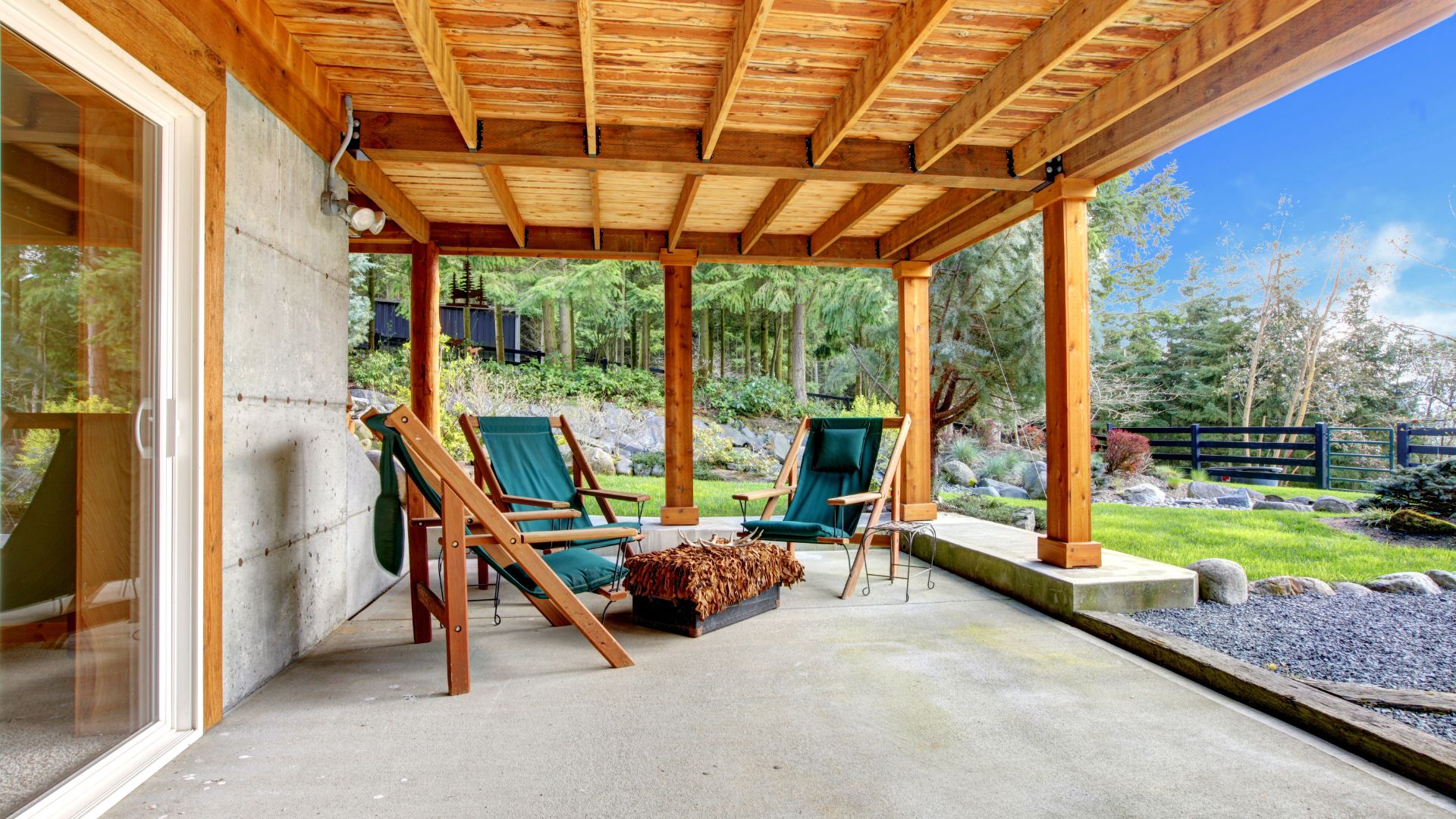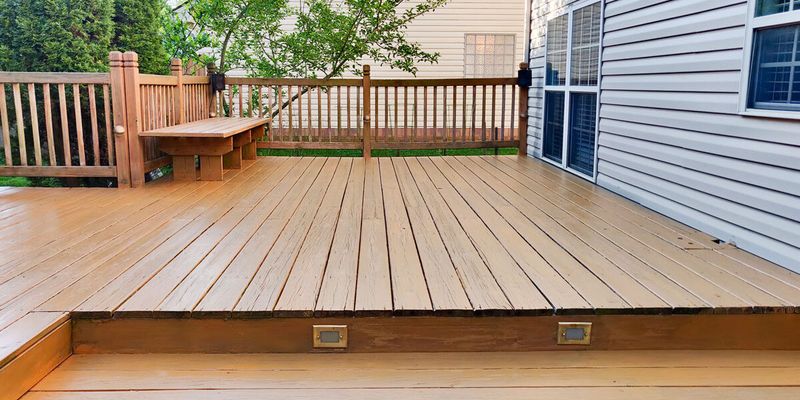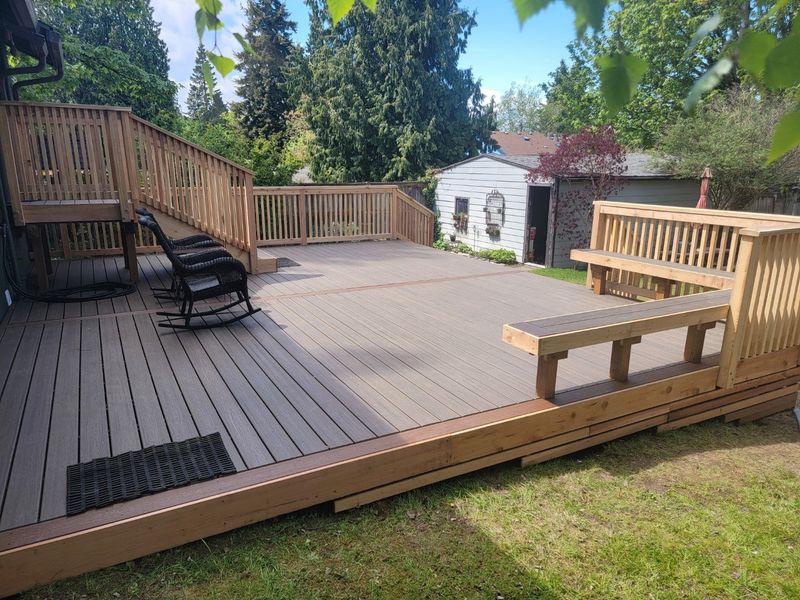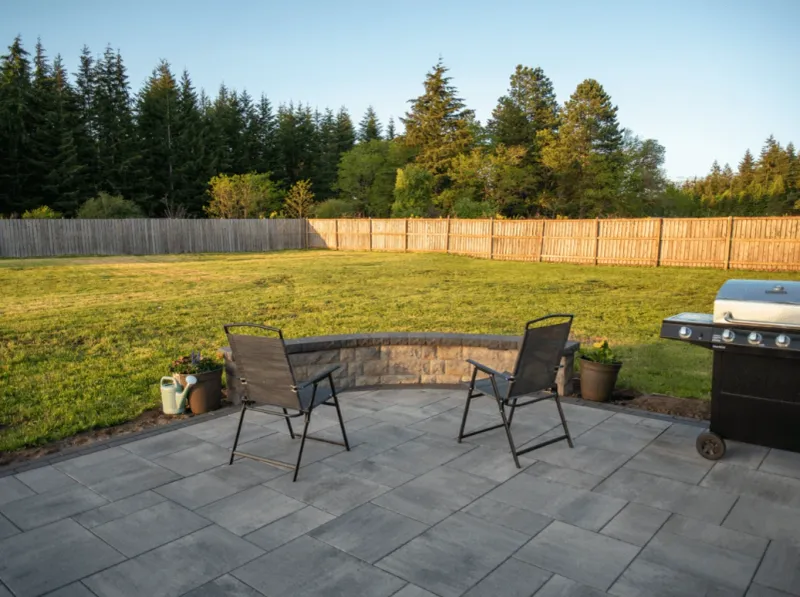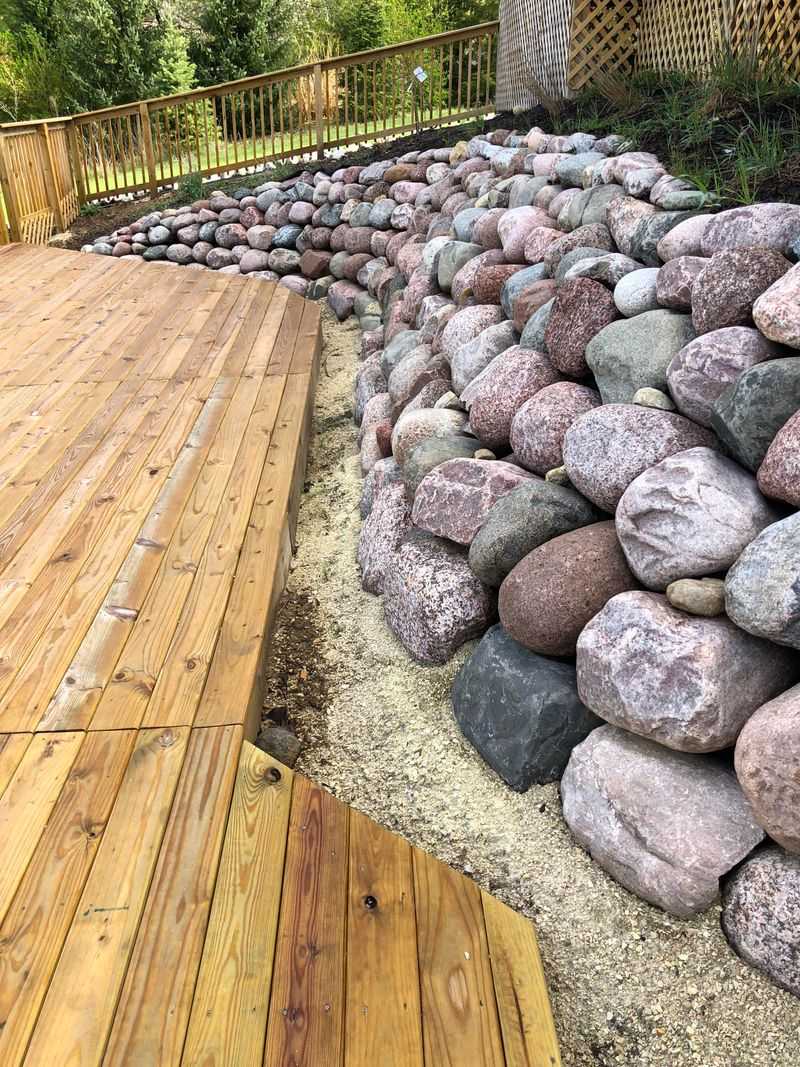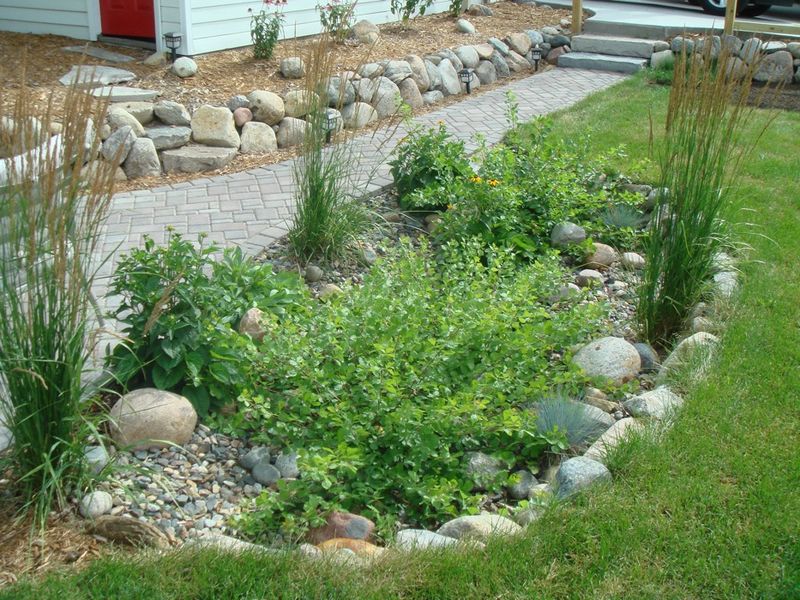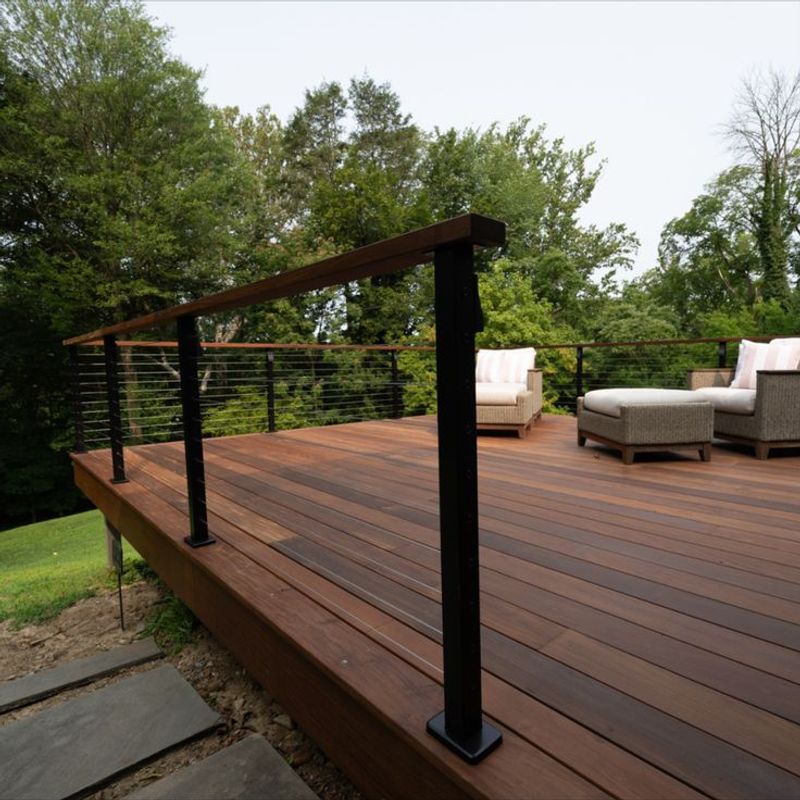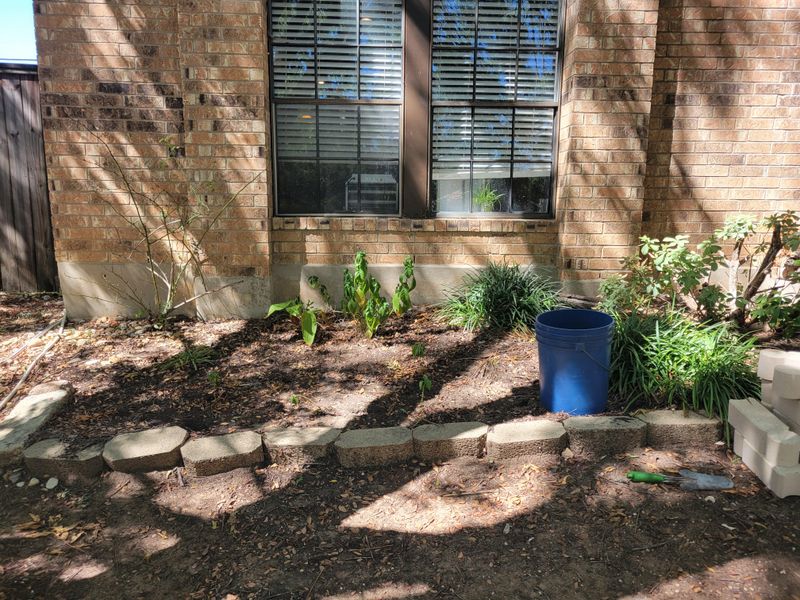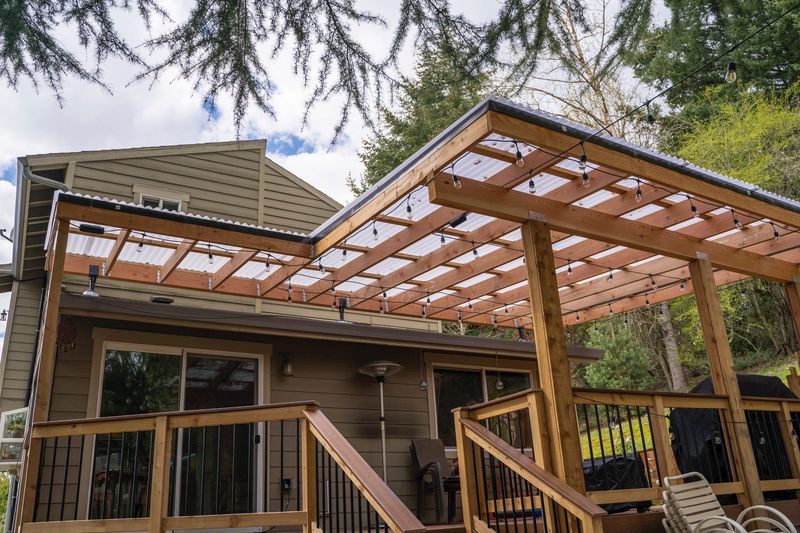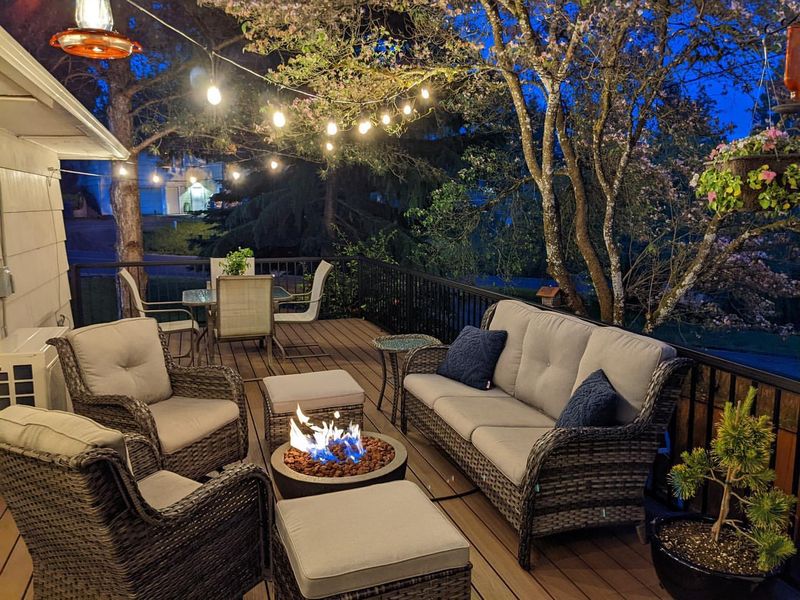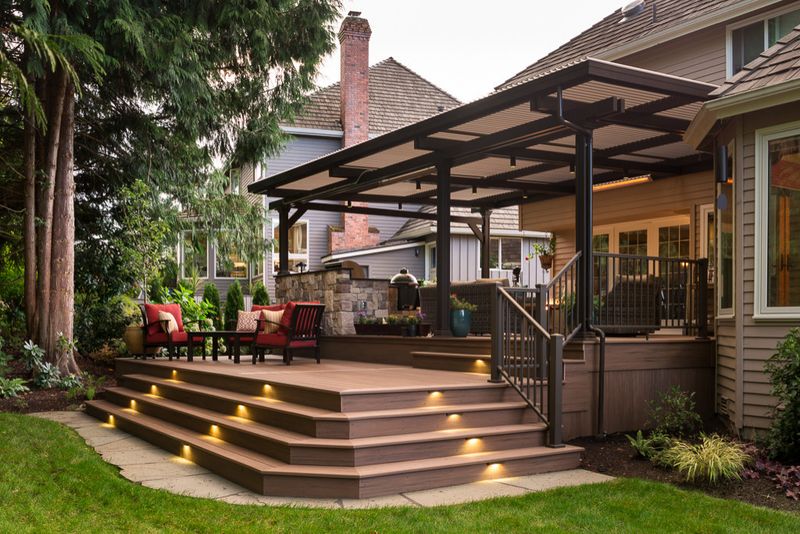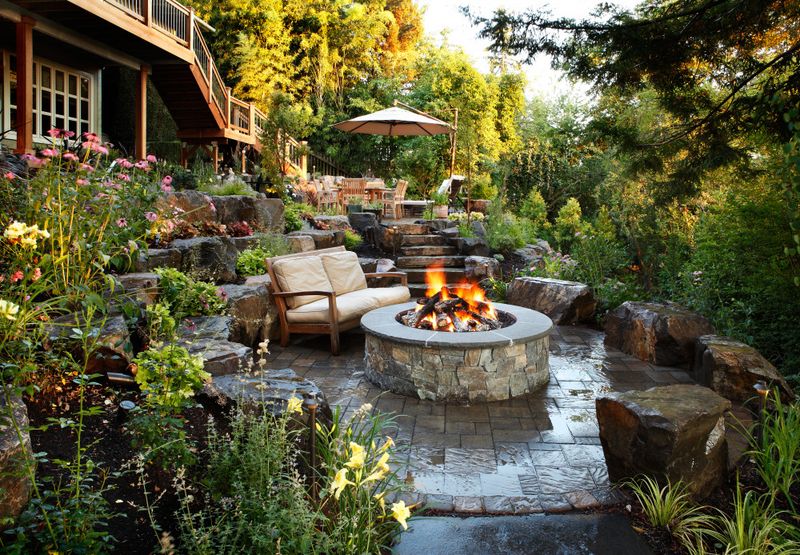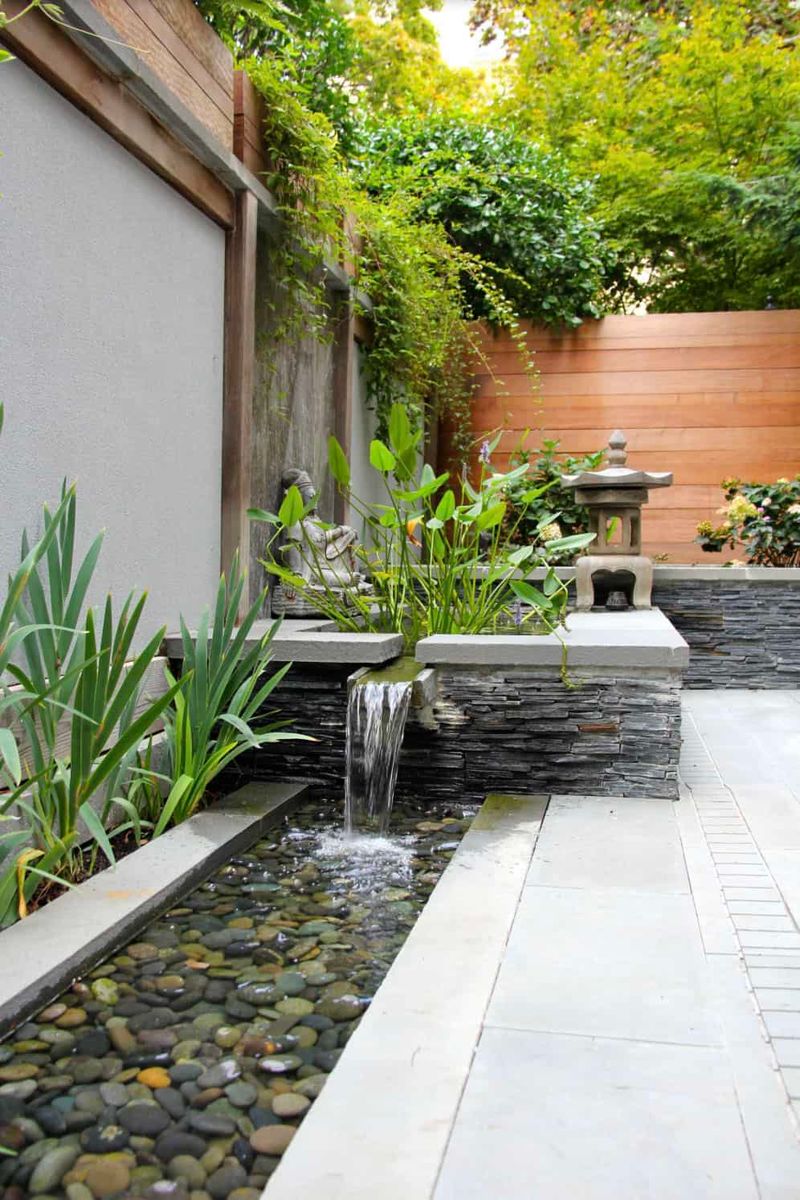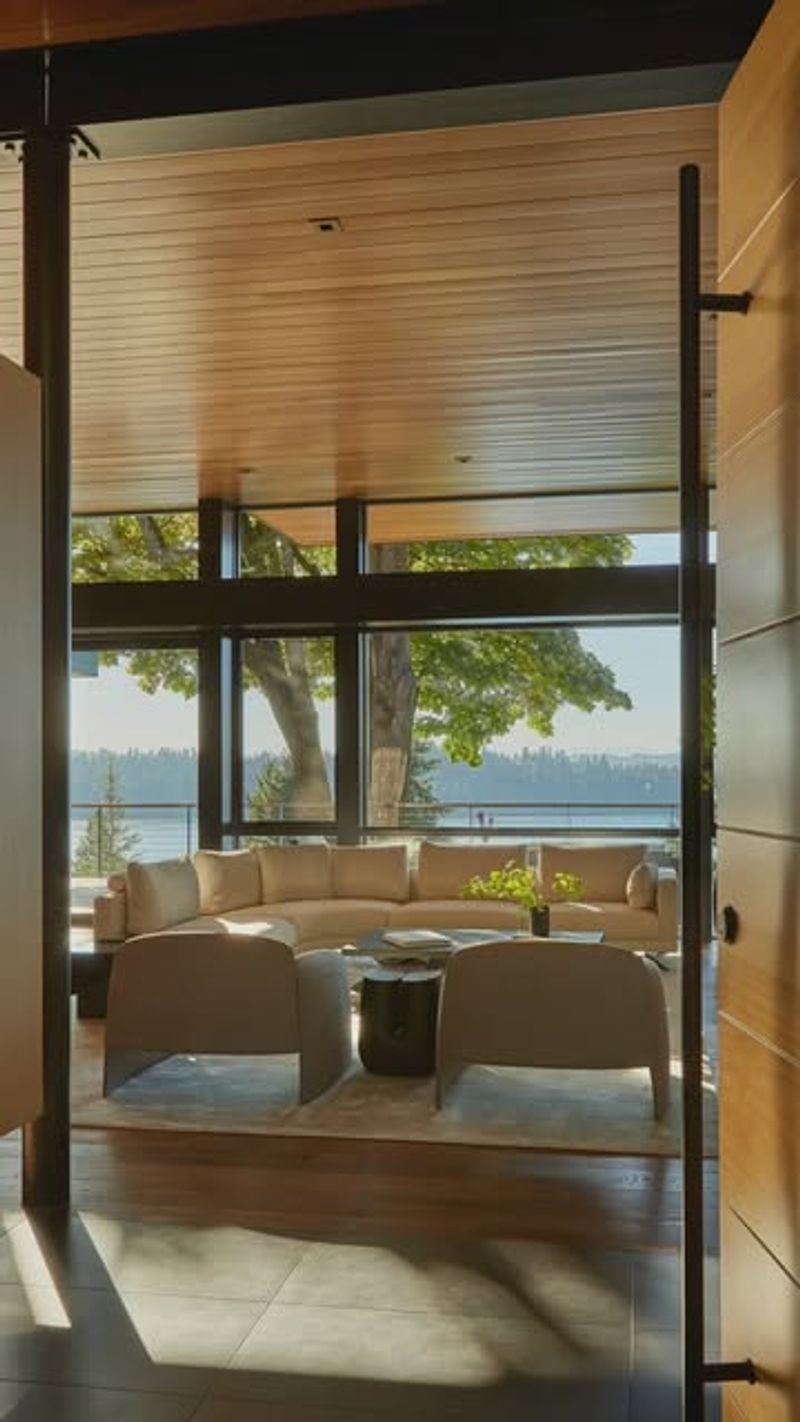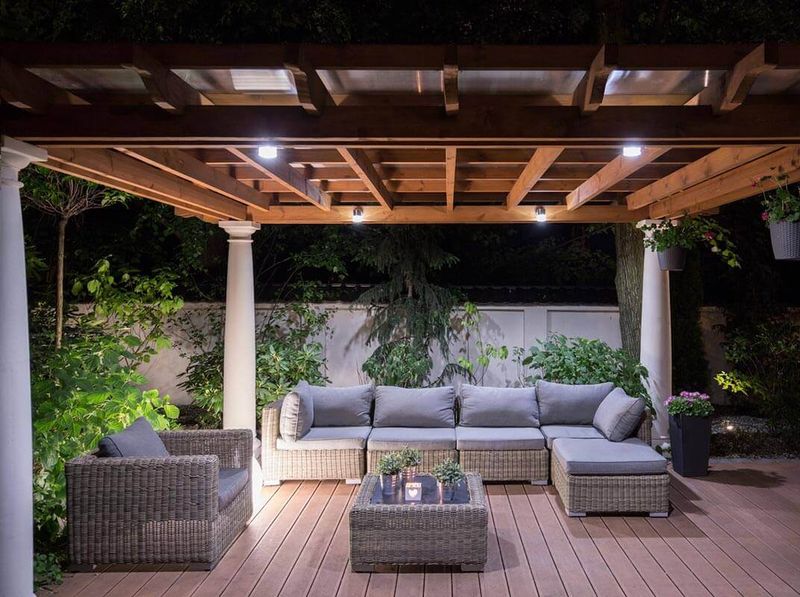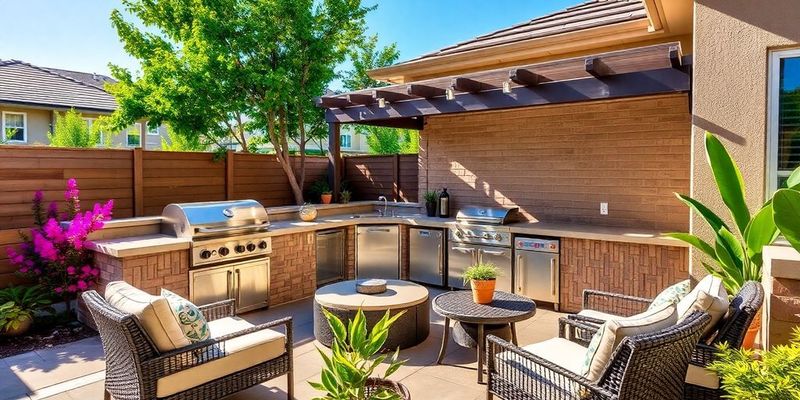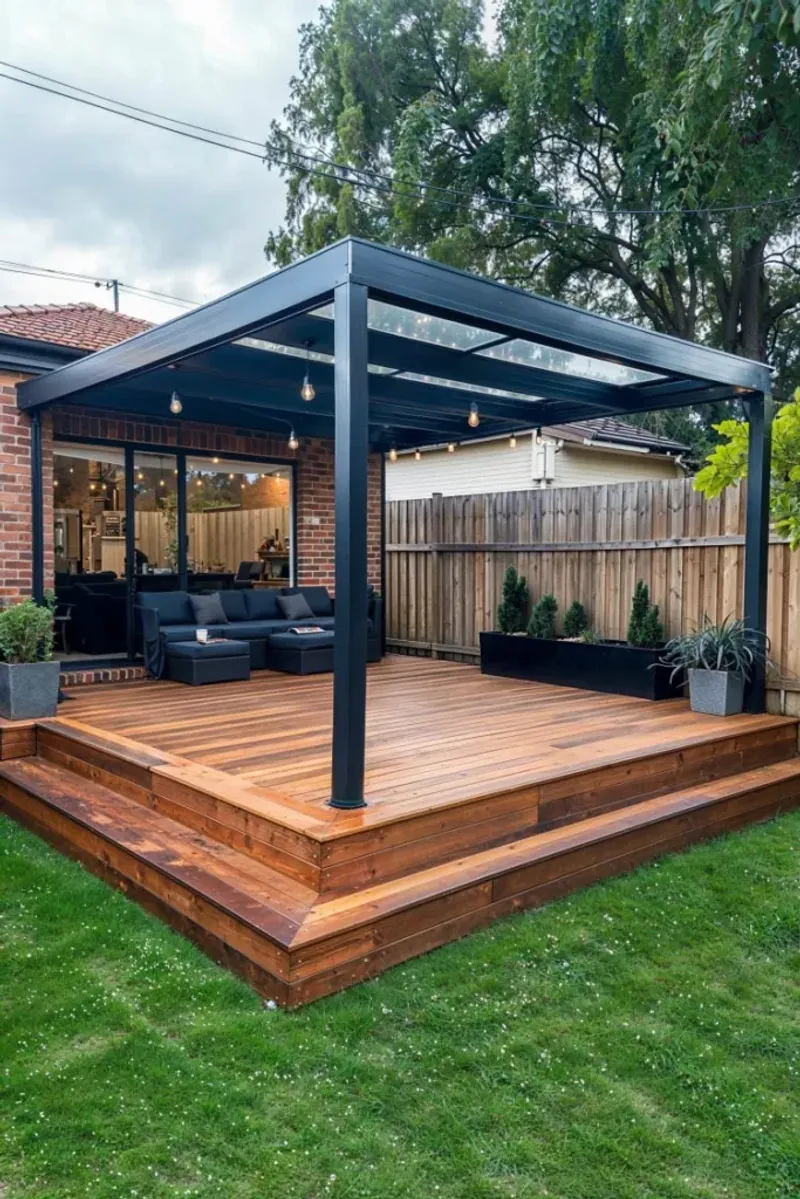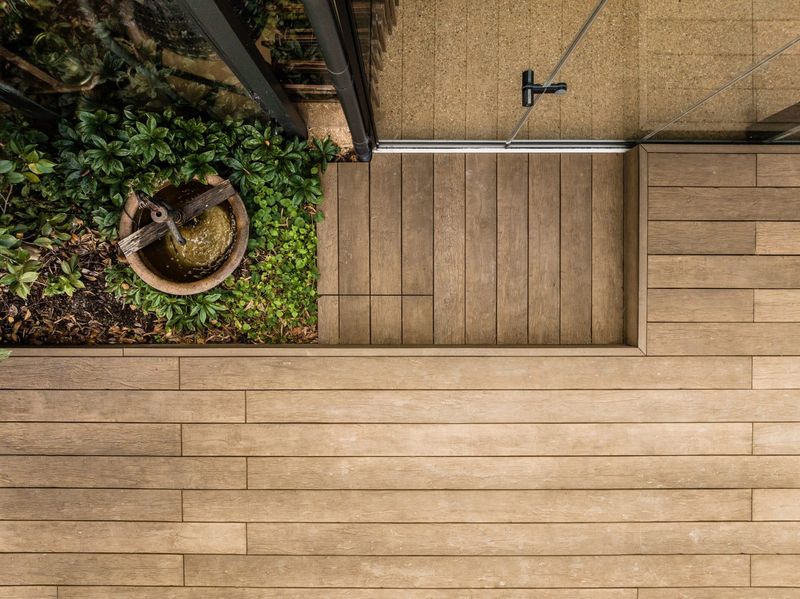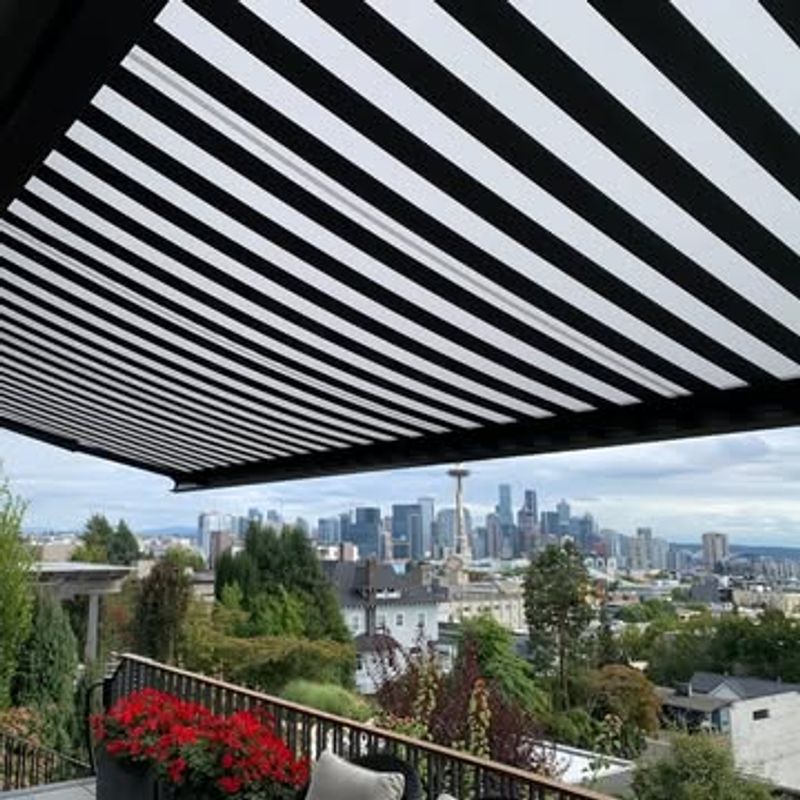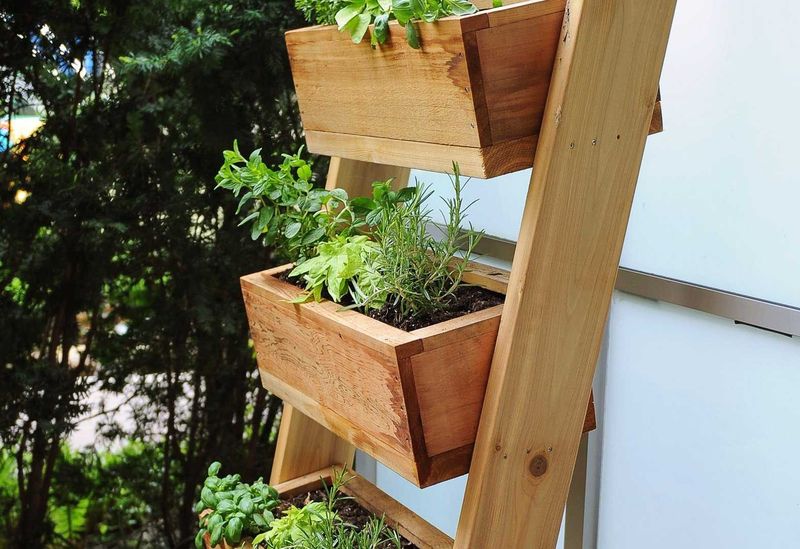Building a ground-level deck in Washington is a smart way to enjoy the outdoors—even when the weather’s less than sunny. Our unpredictable rain doesn’t have to put plans on pause; with a few thoughtful design tweaks, you can make it work year-round.
Whether it’s a cozy platform for weekend barbecues or a fully equipped outdoor lounge, the goal is comfort with resilience. Materials like composite decking and built-in drainage systems help keep things dry and low-maintenance, no matter the forecast.
With the right setup, your backyard becomes a gathering spot—rain or shine. Add some shade structures, weatherproof seating, and string lights, and you’ll be making memories long after the last drop falls.
1. Cedar Platform With Drainage Channels
Cedar naturally resists our Washington dampness better than most woods. The natural oils in this local timber fight off rot and insects without chemical treatments.
Adding subtle drainage channels prevents standing water after our famous rainy days. I’ve installed these in several Seattle-area decks and noticed they dry significantly faster than standard designs.
The reddish-brown tones warm up outdoor spaces even on overcast days, creating a cozy feeling that’s particularly welcome during our long gray seasons.
2. Composite Decking For Rainy Regions
Northwest rain takes a toll on traditional wood. Composite materials blend recycled plastic and wood fibers, creating a surface that withstands our persistent moisture without warping or splintering.
The material barely fades even with our dramatic seasonal shifts from wet winters to increasingly sunny summers. My neighbor’s composite deck looks nearly identical to when it was installed five years ago, despite minimal maintenance.
Most options come with impressive warranties, sometimes 25+ years, giving peace of mind through countless Pacific Northwest storms.
3. Moss-Resistant Paver Combination
Mixing deck boards with concrete pavers creates interesting visual patterns while addressing our persistent moss issues. The pavers can be treated with moss inhibitors that wood can’t always accommodate.
Spacing becomes crucial in our damp climate. Leaving slightly wider gaps between materials allows better airflow, reducing the moist conditions where moss thrives in Washington yards.
The combination provides different textures underfoot and breaks up large deck spaces into more intimate zones – perfect for our typically modest-sized urban lots.
4. Natural Stone Border Integration
Washington’s landscape offers beautiful local stone that makes perfect borders for ground-level decks. Columbia River basalt or Olympic Peninsula granite connects your deck to our region’s natural geology.
The stone creates a smooth transition between your structured deck and the surrounding garden. During our heavy rainfall months, these borders also serve as subtle drainage pathways.
Temperatures in these stones fluctuate less than wooden elements, making them comfortable to sit on during both our cool springs and increasingly warm summers.
5. Rain Garden Adjacent Design
Capturing runoff from your deck can turn a drainage problem into a garden feature. A small rain garden filled with native Washington plants like sword ferns and red-twig dogwoods thrives with the extra moisture.
Slight deck slopes direct water toward these planted areas rather than toward your foundation. The plants filter the runoff, preventing erosion during our intense winter downpours.
This approach earned me compliments from my local water district representative, who noted it helps reduce stormwater impact – an increasing concern in our developing neighborhoods.
6. Olympic Peninsula-Inspired Driftwood Accents
Incorporating weathered driftwood pieces collected from Washington beaches adds coastal character to ground-level decks. These natural sculptures bring a piece of our shoreline wilderness into suburban spaces.
Larger pieces can serve as informal seating or tables, while smaller fragments make conversation-starting decorative elements. The silvery patina develops naturally in our climate and requires no maintenance.
My family’s deck features a stunning piece from Ruby Beach that has withstood eight years of outdoor exposure while continuing to draw attention from visitors.
7. Native Perennial Border Integration
Framing your deck with drought-tolerant natives like salal, Oregon grape, and kinnikinnick creates a distinctly Northwest aesthetic. These plants thrive in our summer dry spells while staying green during mild winters.
The year-round structure they provide looks intentional even in January when other gardens appear bare. Their berries attract native birds, bringing wildlife viewing opportunities right to your deck space.
After establishing them around my own deck three years ago, I’ve appreciated how they need almost no supplemental water despite our increasingly dry summers.
8. Covered Section For Year-Round Use
Even a partial roof over one section of your ground-level deck dramatically extends usability in our rainy climate. A simple transparent polycarbonate covering allows light while keeping the space dry.
Positioning this covered area adjacent to entry doors creates a practical transition zone between indoors and outdoors. Friends from Portland copied this feature after visiting our home, noting how it allowed them to use their deck from October through April.
The sound of rain on the covering adds sensory pleasure while you stay comfortably dry underneath – one of those distinctly Northwest experiences.
9. Hidden Heating Elements For Extended Seasons
Extending deck season beyond our brief summer is possible with discreetly installed heating elements. Under-bench radiant heaters or slim overhead units can raise the ambient temperature by 10-15 degrees.
Strategic placement focuses warmth where people gather rather than trying to heat the entire outdoor area. The investment pays off by making your deck usable during our lengthy shoulder seasons.
My Seattle deck gets used well into November thanks to these additions, allowing us to enjoy the brilliant fall colors of our Japanese maples while staying comfortably warm.
10. Multi-Level Ground Design
Creating subtle level changes of just 4-8 inches defines different functional zones without requiring railings or complex construction. The slight elevation changes add visual interest to otherwise flat spaces.
These small platforms can separate dining areas from lounging spaces or highlight a special feature. Working with our typically sloped Washington lots, this approach often requires less excavation than creating one large perfectly flat surface.
The terraced effect also manages water flow during heavy rain, directing runoff away from the house and into appropriate drainage areas.
11. Integrated Fire Pit Conversation Area
Washington evenings often turn chilly even in summer, making a fire feature the natural center of outdoor gatherings. A gas-powered option works well in areas with burn restrictions, which are increasingly common during our dry months.
Surrounding the fire pit with built-in seating creates a dedicated conversation space. The flickering light extends evening use of your deck while providing enough warmth to cut through our coastal dampness.
When we added this feature, our deck instantly became the favorite gathering spot for neighborhood get-togethers, especially during those perfect September evenings.
12. Cascading Water Feature Edge
A subtle water feature along one edge of your deck creates a sensory experience that masks urban noise – particularly valuable in our increasingly dense neighborhoods. The sound of water provides a constant background that enhances relaxation.
Recirculating designs conserve water while still providing the desired effect. The gentle moisture they add to the immediate area can actually benefit certain Northwest plants placed nearby.
During our dry summers, the microclimate created by these features feels refreshingly cool, making the deck more comfortable on those increasingly frequent hot days.
13. Mount Rainier View Orientation
Positioning your deck to capture iconic Northwest views transforms an ordinary space into something extraordinary. Even distant glimpses of Mount Rainier, the Olympics, or Puget Sound add significant value to outdoor experiences.
Thoughtful furniture arrangement ensures these sightlines remain unobstructed. Sometimes raising just one section of a ground-level deck by a few inches can capture a view that would otherwise be missed.
Having documented the mountain’s appearance from my deck through different seasons, I’ve found these views provide a powerful connection to the larger landscape that defines our region.
14. Strategic Lighting For Misty Evenings
Washington’s early sunsets and frequent overcast days make thoughtful lighting essential for deck enjoyment. Low-voltage systems with dimmable options extend usability without creating harsh glare.
Downlighting from nearby trees creates a natural moonlight effect that’s particularly magical during our misty evenings. Path lights integrated into deck edges improve safety while adding a warm glow that defines the space.
Solar options have improved dramatically and now store enough energy even on our cloudier days to provide reliable illumination for several hours after sunset.
15. Weather-Resistant Outdoor Kitchen
Extending your cooking space outdoors makes summer entertaining effortless. Marine-grade stainless steel components withstand our coastal salt air and frequent moisture better than standard options.
Incorporating a small roof or pergola above cooking areas protects both equipment and the cook from our unpredictable drizzles. Having prepared countless salmon dinners on my outdoor setup, I appreciate how it keeps cooking heat outside during our increasingly warm summers.
Built-in storage with waterproof seals allows utensils and supplies to remain outdoors year-round, eliminating the constant shuttling between indoor and outdoor kitchens.
16. Native Timber Pergola Addition
Douglas fir or Western red cedar pergolas add vertical interest while maintaining the open feeling that makes ground-level decks so appealing. These Northwest timbers develop beautiful patinas in our climate when properly finished.
The partial shade they create is perfect for our increasingly sunny summers while still allowing light during darker months. Training native vines like clematis or honeysuckle across the structure adds seasonal interest and attracts hummingbirds.
The posts can incorporate subtle outdoor lighting, extending deck use into our long summer evenings when darkness doesn’t fall until after 9 pm.
17. Hidden Storage Solutions
Our seasonal outdoor living calls for practical storage within the deck itself. Waterproof compartments built into bench seating or as trap doors in the decking surface keep cushions and equipment dry during wet months.
These hidden spaces eliminate the need for a separate storage shed in smaller yards. The best designs include ventilation to prevent mildew issues common in our damp climate.
After adding three storage benches to my Tacoma deck, we gained nearly 30 cubic feet of weather-protected space that keeps our outdoor essentials organized and readily accessible.
18. Retractable Awning Protection
Washington’s unpredictable weather patterns make flexibility crucial for outdoor spaces. Modern retractable awnings deploy quickly when afternoon showers threaten or when summer sun becomes too intense.
The ability to adjust coverage depending on conditions maximizes deck usability throughout our varied seasons. Marine-grade fabrics resist our persistent moisture while providing UV protection during increasingly intense summer sunshine.
Motorized options connect to weather sensors, automatically retracting during high winds – a feature my Portland relatives wish they’d invested in before losing their fixed awning during last winter’s storms.
19. Elevated Planter Boundaries
Defining deck edges with raised planters creates natural boundaries without the visual weight of railings or walls. These containers can be filled with edibles like blueberries and herbs that thrive in our climate.
The raised height brings plants closer to eye level while seated, allowing appreciation of details that might be missed in ground-level gardens. Cedar construction matches many deck materials while providing excellent longevity in our wet conditions.
My Seattle deck features planters filled with trailing strawberries that provide both visual appeal and sweet treats during summer gatherings.

